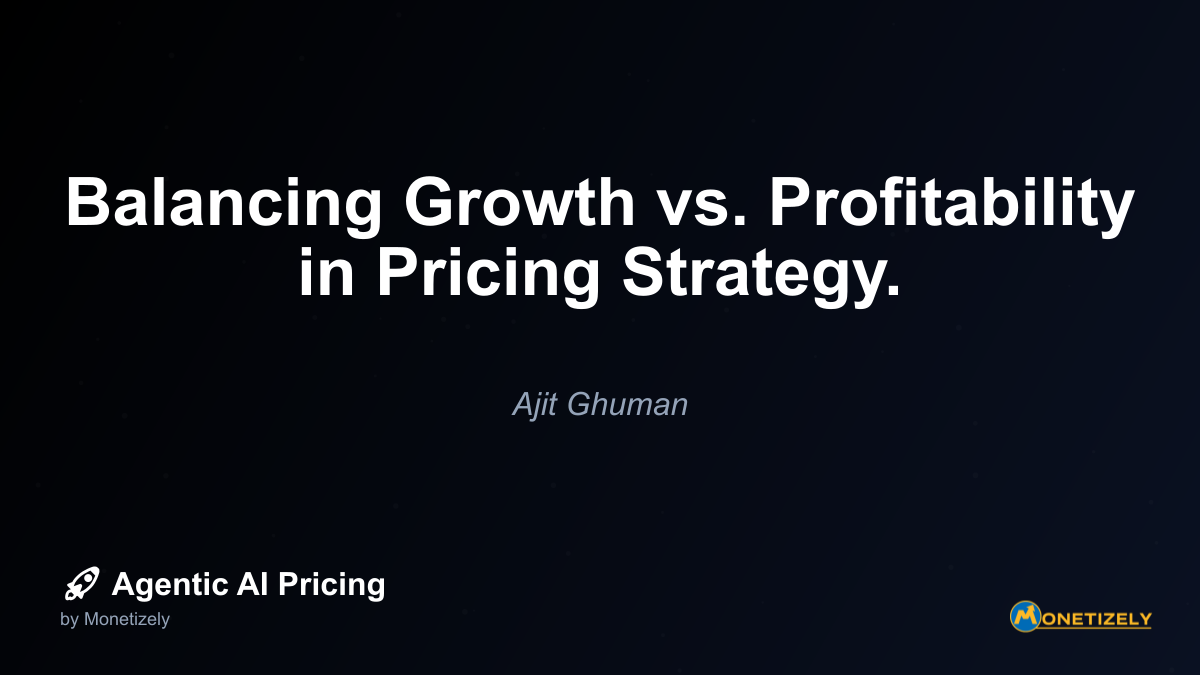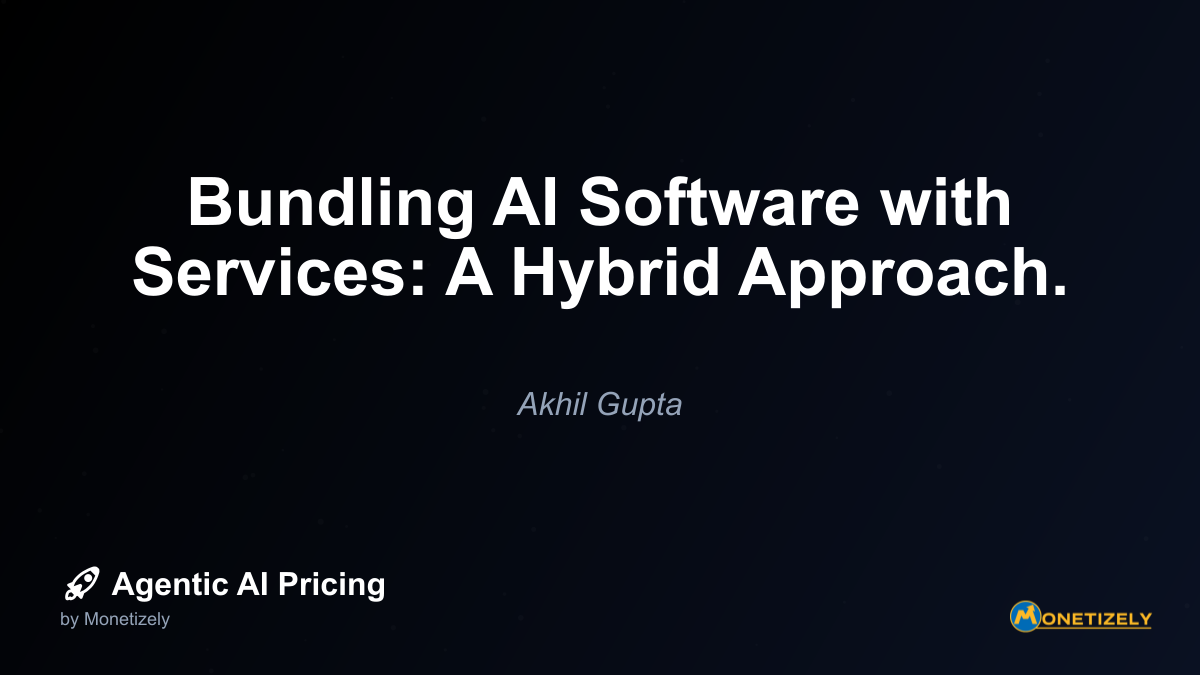· Akhil Gupta · Strategy & Planning · 11 min read
Pivoting Your Pricing Model: Lessons from Companies That Changed Course.
AI and SaaS Pricing Masterclass
Learn the art of strategic pricing directly from industry experts. Our comprehensive course provides frameworks and methodologies for optimizing your pricing strategy in the evolving AI landscape. Earn a professional certification that can be imported directly to your LinkedIn profile.

Case Study: Slack’s Transition from Per-User to Usage-Based Pricing
While Adobe’s transition was dramatic and comprehensive, other companies have taken more nuanced approaches to pricing pivots. Slack’s evolution from a strictly per-user model to a usage-based approach offers valuable insights for companies considering more incremental changes.
The Context
Slack launched in 2013 with a straightforward per-user pricing model typical of SaaS applications:
- Free tier with limited message history
- Standard tier at $6.67 per user/month (billed annually)
- Plus tier at $12.50 per user/month with additional features
This model worked well during Slack’s rapid growth phase, but as the company matured, limitations emerged:
- Organizations were incentivized to limit the number of seats, undermining Slack’s network effect value
- Casual or part-time users were often excluded due to cost concerns
- Competitors offered more flexible models that better accommodated varying usage patterns
- Enterprise customers sought more predictable billing aligned with actual value received
The Pivot
In 2018, Slack introduced its Enterprise Grid offering with a significant shift away from pure per-seat pricing. The new model incorporated:
- A usage-based component that considered active usage rather than just seat count
- Volume discounts based on organization-wide engagement
- Custom pricing for enterprise deployments
- Billing based on actual usage rather than provisioned accounts
This represented a partial pivot rather than a complete overhaul, as Slack maintained its per-user pricing for smaller organizations while introducing the new model for enterprise customers.
Communication Strategy and Customer Response
Slack’s approach to communicating this change offers several lessons:
What Worked:
- Targeting the new model specifically to enterprise customers who were already requesting more flexible options
- Positioning the change as responding to customer feedback rather than a company-driven initiative
- Providing clear ROI calculations showing cost advantages for organizations with variable usage patterns
- Implementing the change gradually rather than forcing an immediate transition
What Could Have Been Better:
- Initial messaging created some confusion about eligibility and migration paths
- The bifurcated approach (maintaining per-seat for some, usage-based for others) created some market confusion
- Transparency around actual cost implications could have been clearer for organizations transitioning between models
Business Impact
Slack’s measured approach to pivoting its pricing model yielded significant benefits:
- Enterprise revenue grew substantially, becoming a major driver of overall growth
- Customer expansion became more natural as the pricing friction for adding users decreased
- Competitive positioning improved against Microsoft Teams and other alternatives
- The company’s acquisition by Salesforce for $27.7 billion in 2021 validated the success of its business model evolution
Slack’s experience demonstrates that pricing pivots don’t necessarily require dramatic overnight changes. Strategic, targeted adjustments to pricing models can deliver significant benefits while minimizing disruption.
Case Study: Netflix’s Evolution from DVD Rentals to Streaming
While software companies provide numerous examples of pricing pivots, some of the most instructive case studies come from other industries. Netflix’s transition from DVD rentals to streaming represents one of the most successful business model transformations in recent history.
The Context
Netflix launched in 1997 as a DVD-by-mail rental service with a novel pricing approach:
- Monthly subscription fee ($19.95 at launch)
- No late fees (unlike Blockbuster)
- Limited number of DVDs out at once
This model disrupted the video rental industry and fueled Netflix’s initial growth. However, by 2007, the company recognized that physical media would eventually be supplanted by digital streaming.
The Pivot
Netflix’s pricing pivot occurred in several phases:
Phase 1 (2007-2011): Streaming was introduced as a free add-on to DVD subscriptions, allowing Netflix to build its streaming library and user habits while maintaining its core business.
Phase 2 (2011): Netflix announced a separation of DVD and streaming services, effectively raising prices by 60% for customers who wanted both services (from $9.99 to $15.98).
Phase 3 (2013-present): The company gradually increased streaming prices while maintaining DVD pricing, eventually phasing out emphasis on the DVD service entirely.
Communication Strategy and Customer Response
Netflix’s pricing pivot offers perhaps the most dramatic example of both communication failures and eventual success:
What Went Wrong:
- The 2011 price change was perceived as a sudden 60% price increase, creating massive backlash
- The company initially doubled down with a plan to rebrand the DVD service as “Qwikster,” creating further confusion
- Communication focused on company needs rather than customer benefits
- The abrupt nature of the announcement left customers feeling blindsided
The results were catastrophic in the short term:
- Netflix lost 800,000 subscribers in a single quarter
- The stock price plummeted by 77%
- The company faced unprecedented public and media criticism
The Recovery:
- Netflix abandoned the Qwikster plan before implementation
- CEO Reed Hastings issued a public apology for the handling of the transition
- The company slowed the pace of change while maintaining the strategic direction
- Focus shifted to creating exclusive content as a value proposition for the higher-priced streaming service
Business Impact
Despite the initial setbacks, Netflix’s pricing pivot ultimately succeeded beyond all expectations:
- Subscribers grew from 23 million in 2011 to over 230 million in 2023
- Revenue increased from $3.2 billion to $31.6 billion in the same period
- The streaming-first model enabled global expansion impossible with physical media
- Netflix established itself as the leader in a new industry category
Netflix’s experience highlights both the risks and rewards of pricing pivots. While the execution created significant short-term pain, the strategic direction proved correct, and the company successfully navigated through the transition period.
Case Study: Microsoft’s Office to Office 365 Transition
Microsoft’s transition from selling Office as a perpetual license to the subscription-based Office 365 represents another instructive case study, particularly for its more measured approach compared to Adobe’s abrupt change.
The Context
For decades, Microsoft Office dominated the productivity software market with a traditional perpetual licensing model:
- New versions released every 3-4 years (Office 97, 2000, XP, 2003, 2007, 2010, 2013)
- Customers paid once and owned that version permanently
- Revenue spikes occurred around new releases, creating “feast or famine” cycles
- Upgrade rates varied significantly, with many customers skipping versions
By the early 2010s, Microsoft faced several challenges:
- Cloud-based competitors like Google Docs offered free or low-cost alternatives
- The perpetual model didn’t support cloud storage and cross-device synchronization
- Development cycles were too slow for the rapidly evolving market
- Revenue predictability was poor under the traditional model
The Pivot
Unlike Adobe, Microsoft took a gradual approach to its pricing pivot:
Introduction phase (2011): Office 365 launched as an alternative to perpetual licenses, primarily targeting businesses.
Coexistence phase (2011-2017): Microsoft maintained both models, allowing customers to choose between perpetual licenses (Office 2013, 2016) or Office 365 subscriptions.
Incentivization phase (2017-present): While still offering perpetual licenses (Office 2019, 2021), Microsoft increasingly restricted features to the subscription version and emphasized Office 365’s superior value.
Communication Strategy and Customer Response
Microsoft’s communication approach differed significantly from both Adobe and Netflix:
What Worked:
- Maintaining perpetual licenses alongside subscriptions eliminated the feeling of being forced to change
- Clearly articulating the additional benefits of Office 365 (multiple installations, cloud storage, continuous updates)
- Targeting businesses first, where the value proposition was strongest
- Gradually introducing consumer-focused benefits like family plans
Areas of Friction:
- Some confusion resulted from maintaining multiple purchasing options
- Feature differentiation between perpetual and subscription versions wasn’t always clear
- Business customers sometimes struggled with the shift from capital expenditure to operating expenditure
Business Impact
Microsoft’s measured approach to its pricing pivot has proven remarkably successful:
- Office 365 Commercial revenue grew to over $35 billion annually
- Microsoft successfully transitioned from a product company to a services company
- The Microsoft 365 ecosystem expanded beyond Office to include security, communication, and collaboration tools
- Competitive threats from Google and other alternatives were effectively neutralized
Microsoft’s experience demonstrates that maintaining optionality during a pricing pivot can reduce customer resistance while still achieving the desired business transformation.
Key Lessons for Successful Pricing Pivots
Analyzing these case studies reveals several consistent patterns that can guide companies considering their own pricing pivots:
1. Align the Pivot with Increased Customer Value
The most successful pricing pivots deliver clear additional value that justifies any changes. Adobe’s Creative Cloud included continuous updates, cloud storage, and mobile apps. Slack’s usage-based model better matched customer value perception. Microsoft’s Office 365 offered multiple installations and seamless synchronization.
When customers perceive that a pricing change is solely designed to extract more revenue without delivering additional value, resistance is inevitable and often justified.
2. Consider a Phased Approach
Microsoft’s gradual transition proved less disruptive than Adobe’s abrupt change or Netflix’s poorly executed split. While circumstances sometimes necessitate rapid transitions, a phased approach typically reduces risk:
- Introduce the new model alongside the existing one
- Provide incentives rather than mandates for early adoption
- Allow adequate time for customers to adjust budgets and processes
- Gradually shift emphasis from old to new models
3. Segment Your Approach When Appropriate
Different customer segments often have different needs and tolerance for change. Slack recognized this by maintaining per-seat pricing for smaller organizations while introducing usage-based models for enterprises. Microsoft initially focused Office 365 on businesses before emphasizing consumer subscriptions.
Tailoring your approach to different segments can maximize acceptance while addressing the specific needs of each customer type.
4. Communicate Benefits, Not Company Needs
Netflix’s initial communication focused heavily on the company’s need to separate DVD and streaming businesses. This contrasts with Microsoft’s emphasis on the additional value customers would receive from Office 365.
Effective communication during pricing pivots emphasizes customer benefits first, with company rationale as secondary support. Customers care far more about what they gain than about your internal business challenges.
5. Provide Migration Paths and Transition Support
Successful pricing pivots include clear migration paths and support for existing customers:
- Adobe offered promotional pricing for existing customers
- Microsoft provided migration tools and guidance for transitioning from on-premises to cloud deployments
- Slack offered consultative support for enterprises moving to usage-based models
Customers who feel supported through a transition are more likely to remain loyal despite the changes.
6. Use Grandfathering Strategically
“Grandfathering” existing customers under old pricing terms can reduce resistance but comes with tradeoffs:
Benefits:
- Demonstrates loyalty to existing customers
- Reduces immediate churn risk
- Allows time for customers to recognize new value
Drawbacks:
- Creates revenue drag compared to universal adoption
- Complicates systems and reporting
- May create perceived inequities between customer cohorts
Strategic grandfathering often includes timeframes or incentives to eventually migrate all customers to the new model.
7. Prepare for Short-Term Pain
Even well-executed pricing pivots typically involve short-term challenges:
- Netflix lost subscribers and market value before its eventual success
- Adobe weathered significant customer backlash and petition campaigns
- Microsoft navigated confusion around its dual-track approach
Companies must prepare financially and operationally for these transitional challenges, ensuring they have the resources to reach the long-term benefits.
8. Measure Success Beyond Revenue
While revenue impact is obviously critical, successful pricing pivots should be measured across multiple dimensions:
- Customer acquisition cost and lifetime value
- Expansion revenue and cross-sell opportunities
- Operational efficiency improvements
- Competitive positioning enhancements
- Market perception and brand value
A holistic view of success helps justify short-term disruptions by demonstrating broader business benefits.
Implementing Your Own Pricing Pivot
For companies considering their own pricing pivots, these case studies suggest a structured approach:
1. Assess the Need for Change
Before embarking on a pricing pivot, thoroughly evaluate whether change is truly necessary:
- Are current pricing models sustainable long-term?
- Is there misalignment between how you create and capture value?
- Are competitive pressures undermining your current approach?
- Do customer complaints consistently focus on pricing structure rather than just price points?
Only proceed if the strategic rationale is compelling and the potential benefits outweigh the inevitable transition costs.
2. Design the Target Model
Develop a clear vision of your target pricing model:
- How will value be measured and monetized?
- What metrics or units will form the basis of pricing?
- How will the model scale with customer growth or usage?
- What packaging options will be offered?
The target model should address current limitations while positioning for future growth.
3. Plan the Transition Strategy
Based on your specific circumstances, determine the appropriate transition approach:
- Big bang (Adobe-style complete replacement)
- Parallel paths (Microsoft-style gradual transition)
- Segment-specific (Slack-style targeted implementation)
Consider your customer base, competitive environment, and financial constraints when selecting the approach.
4. Develop Clear Communication
Create comprehensive communication plans for all stakeholders:
- Customers (segmented by impact and relationship)
- Sales and customer success teams
- Partners and resellers
- Investors and analysts
- Media and industry influencers
Messaging should emphasize customer benefits while honestly acknowledging any challenges or tradeoffs.
5. Implement with Flexibility
Even the best-planned pricing pivots require adjustment during implementation:
- Monitor customer feedback and be prepared to address concerns
- Track key metrics to identify unexpected impacts
- Empower customer-facing teams to resolve edge cases
- Be willing to adjust timelines if adoption faces unexpected challenges
Netflix’s abandonment of the Qwikster plan demonstrates that course correction can be preferable to rigid adherence to a flawed approach.
6. Support Internal Stakeholders
Pricing pivots affect internal teams as much as customers:
- Sales teams need new training and potentially revised compensation plans
- Finance departments must adapt to new revenue recognition patterns
- Product teams may need to implement new metering or entitlement systems
- Customer success teams require tools to explain changes and demonstrate value
Comprehensive internal enablement is critical for successful execution.
Conclusion
Pricing pivots represent inflection points that can dramatically alter a company’s trajectory. When executed well, they align pricing with value creation, improve financial sustainability, and position companies for long-term growth. When handled poorly, they can alienate customers, damage brand reputation, and create significant short-term disruption.
The experiences of Adobe, Slack, Netflix, and Microsoft offer valuable lessons applicable across industries. While each company’s journey was unique, common patterns emerge around value alignment, communication strategy, and implementation approach.
For companies contemplating their own pricing pivots, the key lesson is clear: approach these transitions with strategic clarity, customer empathy, and operational flexibility. A well-executed pricing pivot can transform business models and unlock new growth, but it requires careful planning and skillful execution to navigate the inevitable challenges.
By learning from both the successes and missteps of these pioneering companies, today’s business leaders can chart more effective paths through their own pricing transformations.
For more insights on navigating complex pricing transitions, check out our article on Pricing Model Pivots: When and How to Change Your Monetization Approach, which provides additional frameworks for timing and implementing pricing changes. You might also find valuable insights in our analysis of The Pricing Pivot: Changing Strategy When Markets Shift, which explores how to adapt pricing strategies during market disruptions.
Co-Founder & COO
Akhil is an Engineering leader with over 16+ years of experience in building, managing and scaling web-scale, high throughput enterprise applications and teams. He has worked with and led technology teams at FabAlley, BuildSupply and Healthians. He is a graduate from Delhi College of Engineering and UC Berkeley certified CTO.
Pricing Strategy Audit
Let our experts analyze your current pricing strategy and identify opportunities for improvement. Our data-driven assessment will help you unlock untapped revenue potential and optimize your AI pricing approach.




